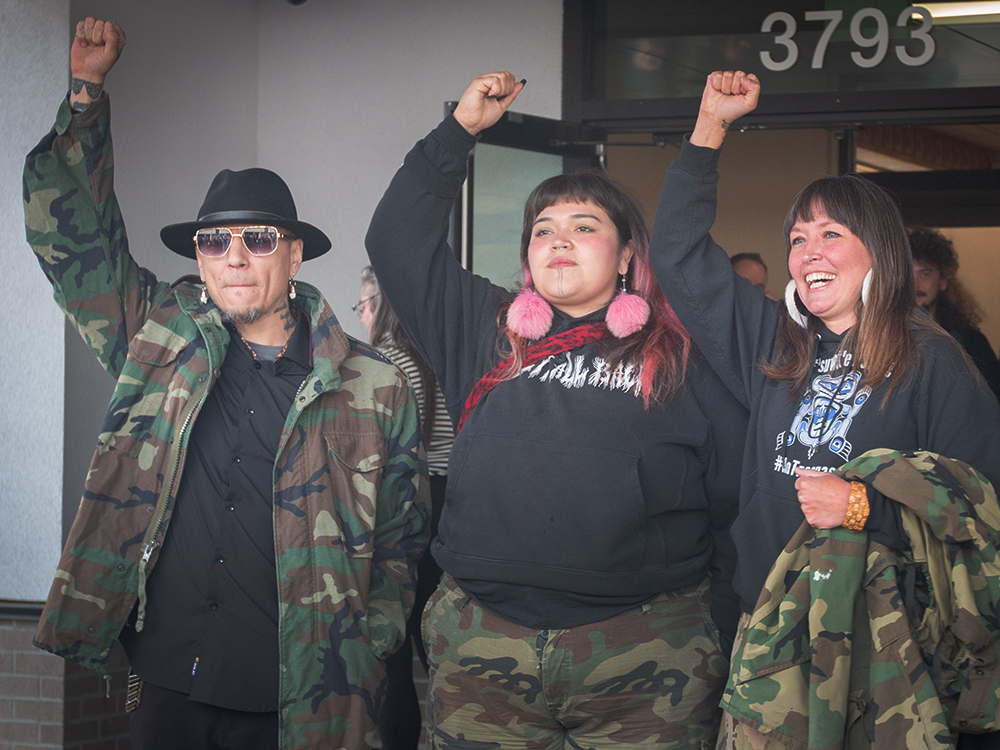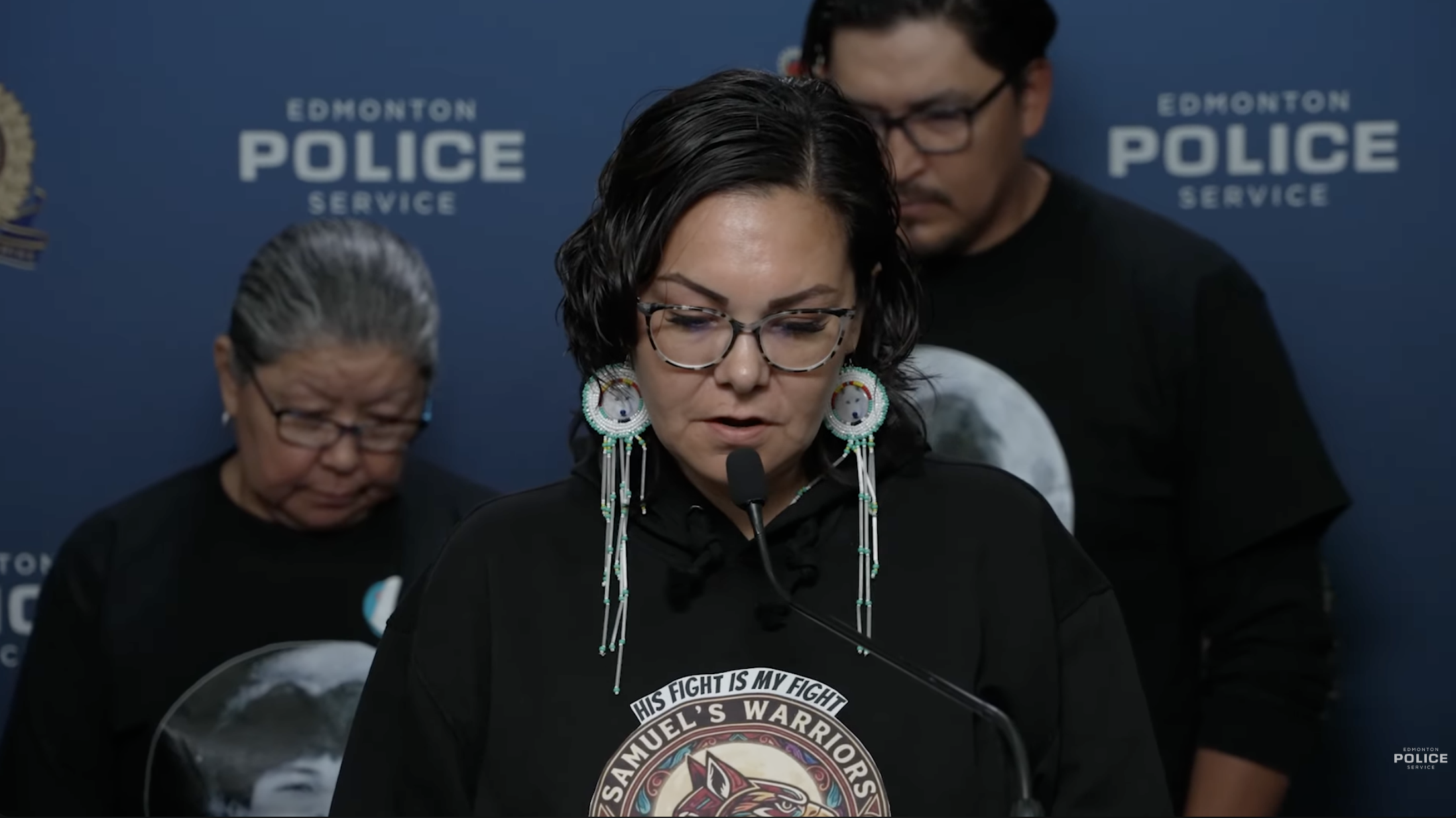After week-long journey, Kwakiutl memorial monument arrives in ‘Vancouver’ via hovercraft
The pole by carver Stan Hunt is now set to travel to Tkʼemlúps te Secwépemc where the former Kamloops Indian Residential School is located
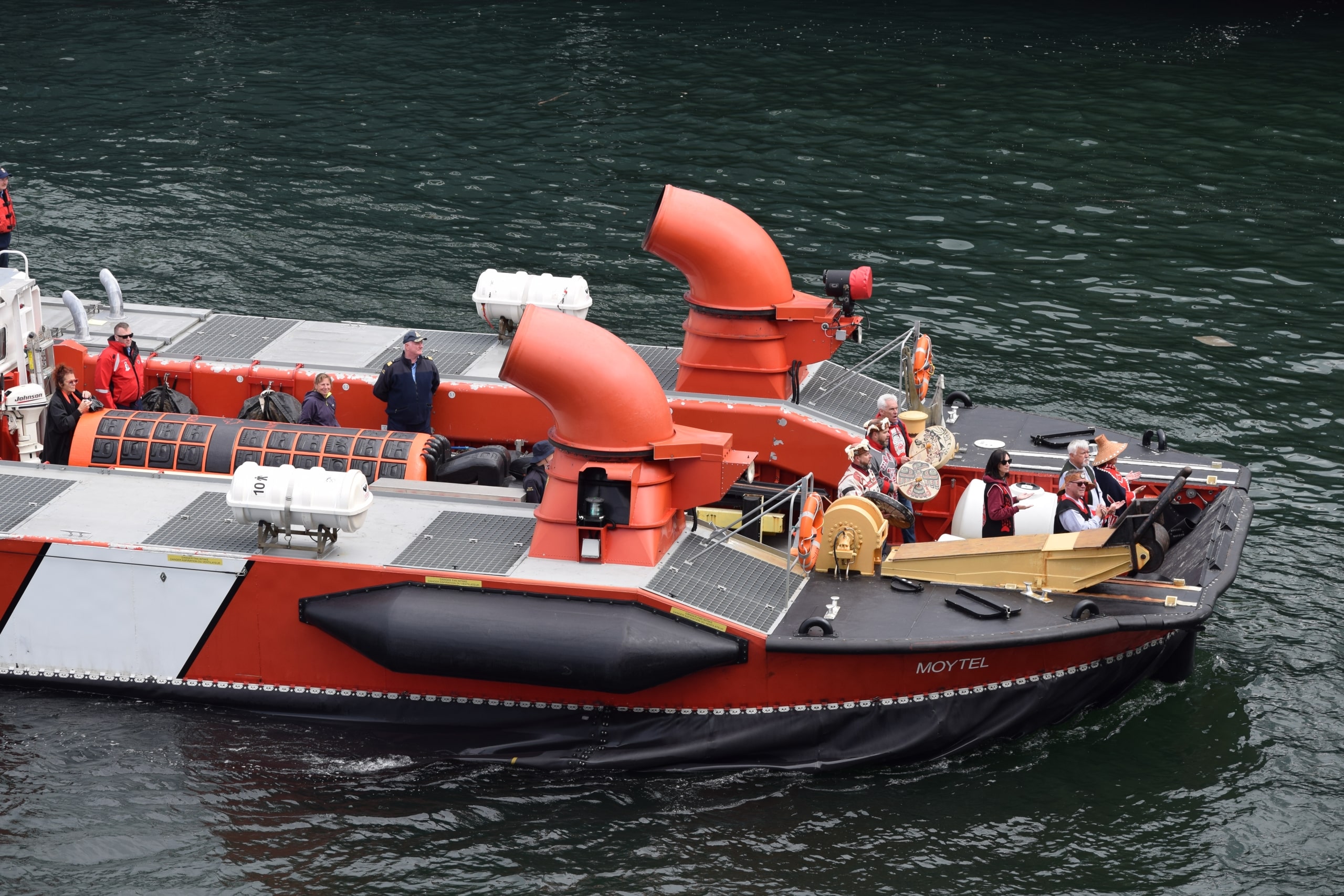
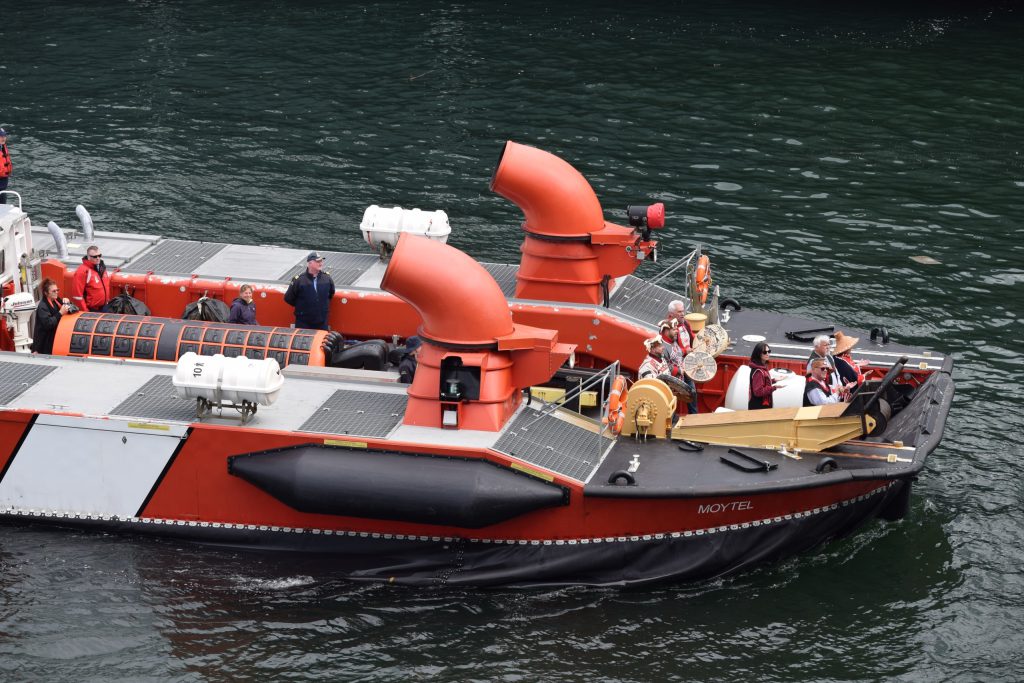
Culminating a week-long journey across “Vancouver Island,” a Kwakiutl monument carved in memory of the children lost to residential schools arrived to the shores of the mainland on Wednesday.
The five-and-a-half-metre pole travelled in a Canadian Coast Guard hovercraft from lək̓ʷəŋən territories to the waters of xʷməθkʷəy̓əm, Sḵwx̱wú7mesh and səlilwətaɬ, where it was welcomed by dozens of people at Canada Place.
The monument by renowned artist Stan Hunt is made of red cedar that was harvested from his home territories in Fort Rupert. It depicts Raven — the Kwakiutl Creator — watching over 130 children as he calls their spirits home.
‘We’re doing this for the children’

Over the winter, Hunt worked five to seven days each week, along with his nephew Rey Dickie and cousin Mervyn Child, to complete the monument — using chisels and knives to carefully fashion each unique face.
“Sometimes, you know, it was eight or 10 below zero in Port Hardy and we were working in a tent, and sometimes it was pretty hard to get up and do this,” Hunt said in an interview.
“But then you think, ‘we’re doing this for the children.’ So we’d just dress warmer, go out and put a full day in and keep working.”
It took 10 months to complete the monument, which was conceptualized in response to the evidence of children’s remains at the former Kamloops Indian Residential School (KIRS). Hunt wanted to do something in memory of all of the spirits lost at the institution, along with others across the country.
Hunt and his carving assistants worked down to the wire until June 16, when a delegation from Kwakiutl began a journey to bring the pole across the Island — which included stops in Homalco, Snuneymuxw and Cowichan territories.
“I think we did 11 ceremonies in six days,” Hunt said.
“I don’t think that’s ever been done. Just to say that sounds incredible, really.”
The plan is to next bring the pole to Tkʼemlúps te Secwépemc territories, where KIRS is located, and options are being explored to potentially journey it further as well.
Raven, the trickster
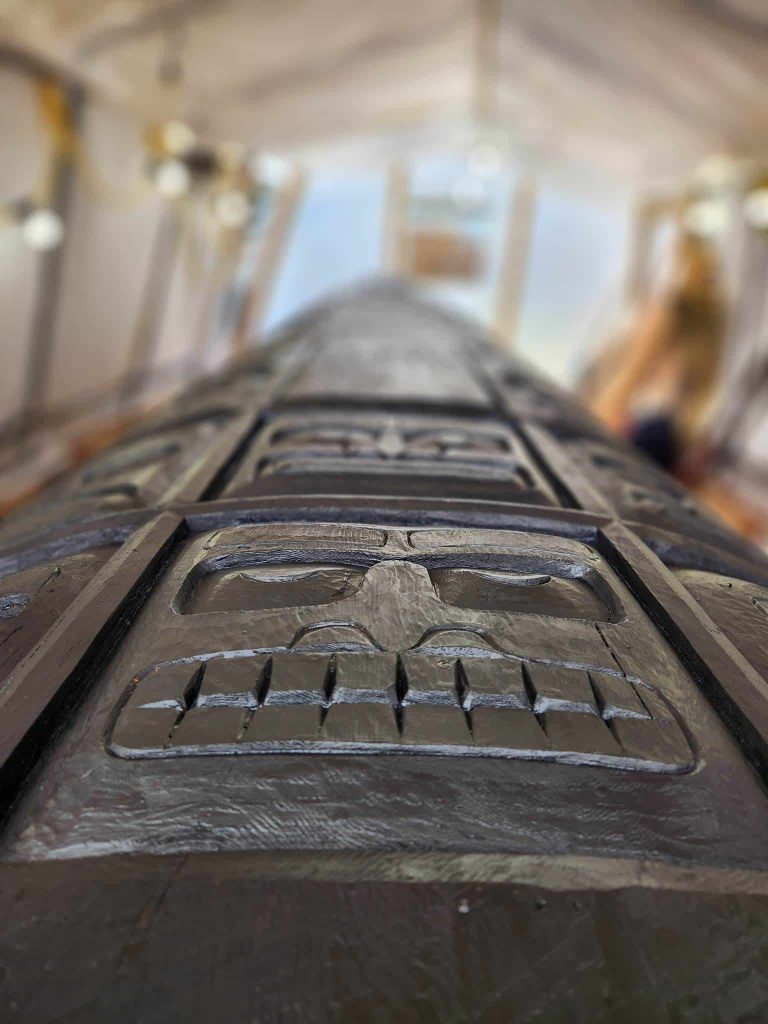
Details of Stan Hunt’s memorial monument. Photo: Canadian Coast Guard
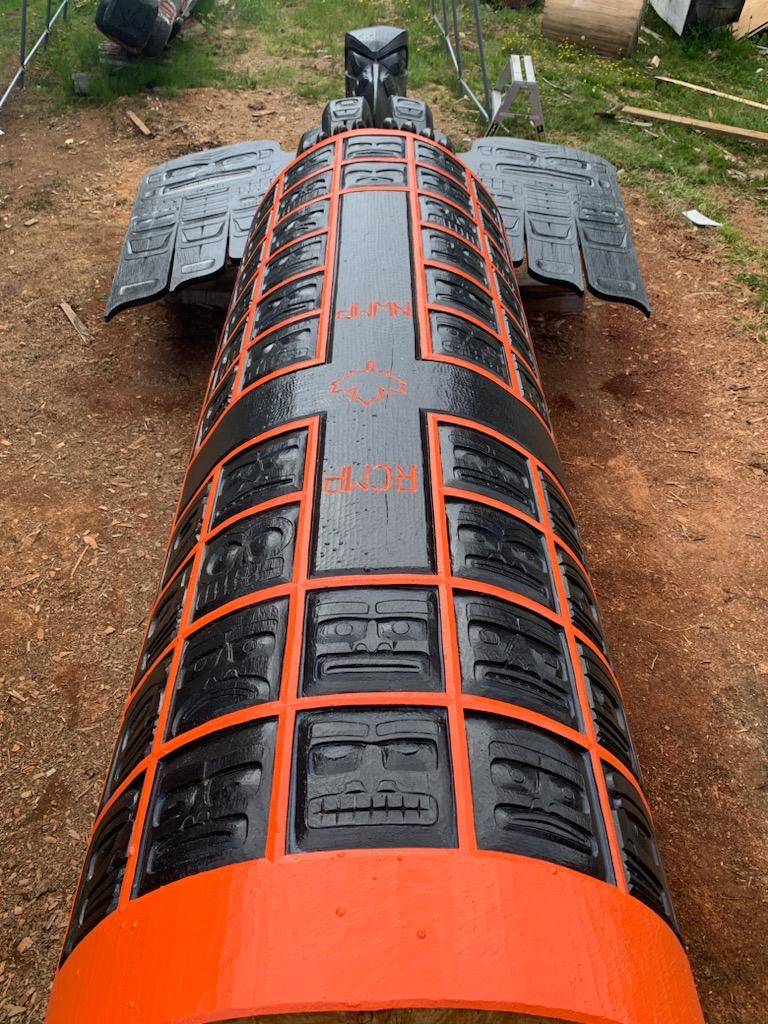
The pole includes an inverted cross, maple leaf and police symbols. Photo: Canadian Coast Guard
The monument is washed in mournful black to represent the dark time in history, with orange details referencing the Every Child Matters movement.
The Catholic church, the police and “Canada” are all also depicted through symbols and text: “All the participants that thought it was OK to murder our children are all represented on the monument,” Hunt said.
The symbols — including a cross and maple leaf — are each inverted for the viewer, but not for Raven, who looks straight down at them while cradling a seed of life in his beak.
“He’s also the trickster, so when he sees that, he sees it right side up,” Hunt said. “And we believe that he’s going to help us find our children and is calling their spirits to come home.”
Through the monument’s journey, Hunt and his delegation have been travelling with police escorts, and also worked with the Canadian Coast Guard and the Navy to bring the pole across to the mainland on National Indigenous Peoples Day.
He said working with those institutions to raise awareness about the harms they’ve caused felt historic because each one of the people he interacted with recognized the hard truths depicted in the pole.
The monument’s journey has also received a lot of public support as both Indigenous and non-Indigenous supporters have gathered at the various stops to view the monument and show solidarity.
‘The monument tells the truth’
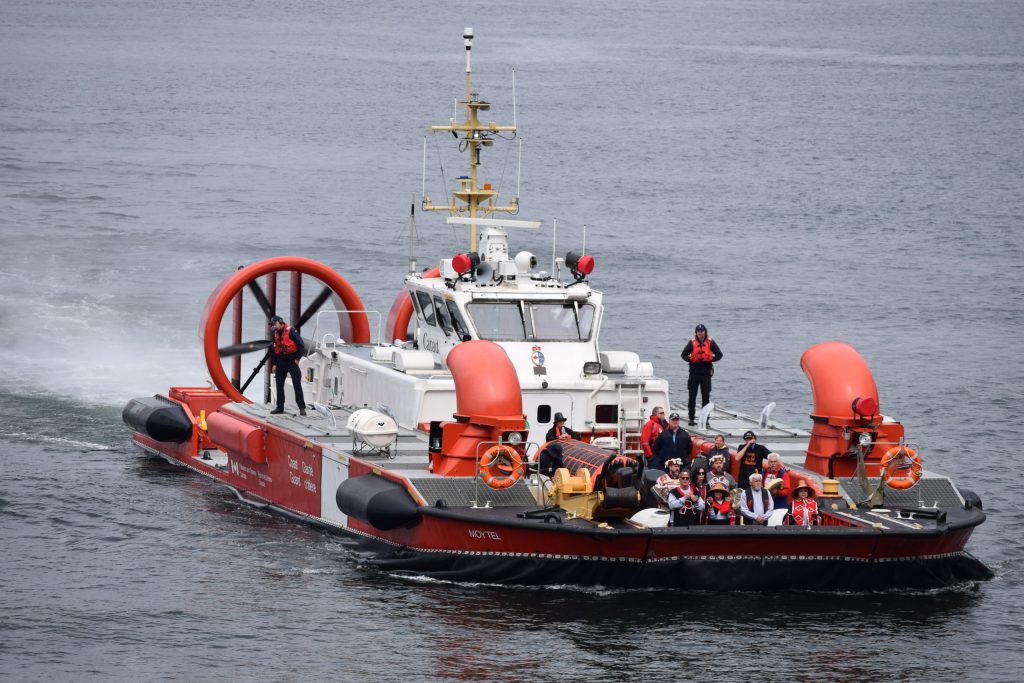
During the journey across the water on the Canadian Coast Guard hovercraft, the delegation briefly rode alongside a BC Ferries vessel, where passengers gathered on the ferry’s deck to applaud and wave.
When the hovercraft eventually pulled into the harbour in “Vancouver,” people lined up along the railings overlooking the harbour to welcome their arrival.
After greeting everyone and acknowledging the host nations, Hunt and his family sang a celebration song as well as their mother and father’s love song.
Now, the pole is in the possession of the Canadian Coast Guard until further notice as Hunt and his family take a rest before they take it on the road again.
“The monument tells the truth. It tells the truth about what happened,” Hunt said.
“It’s deliberately made so when you see it, you automatically know what it’s for. And I think that worked because people, when they see it, they do realize it’s for the children. … It has an effect on people and it brings out a lot of emotions.”
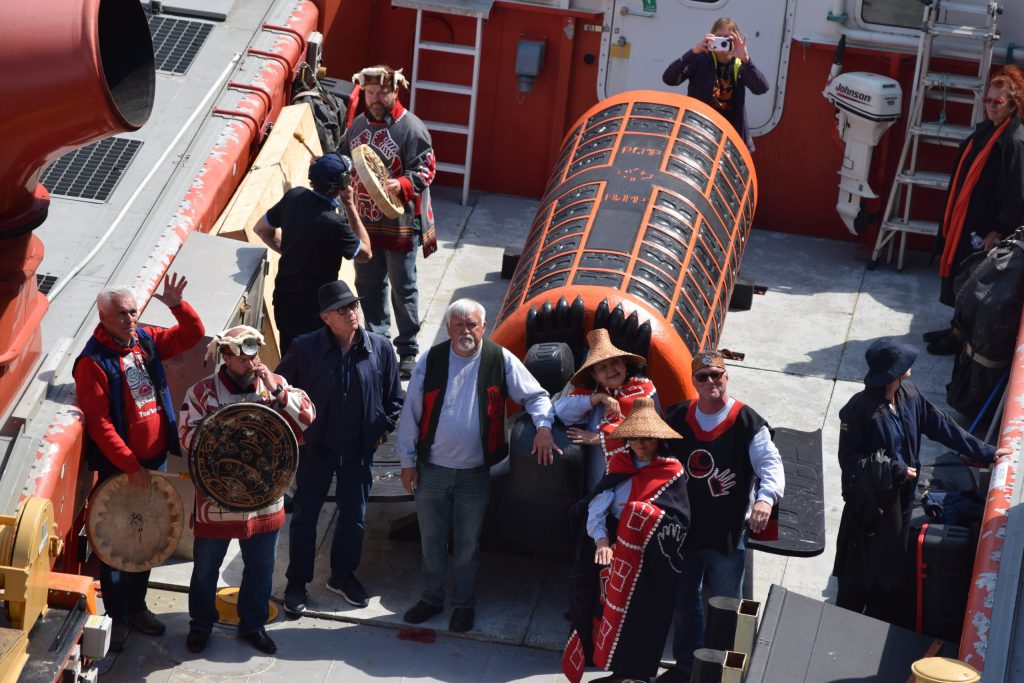
Author
Latest Stories
-
‘Bring her home’: How Buffalo Woman was identified as Ashlee Shingoose
The Anishininew mother as been missing since 2022 — now, her family is one step closer to bringing her home as the Province of Manitoba vows to search for her
-
Land defenders who opposed CGL pipeline avoid jail time as judge acknowledges ‘legacy of colonization’
B.C. Supreme Court sentencing closes a chapter in years-long conflict in Wet’suwet’en territories that led to arrests
-
Samuel Bird’s remains found outside ‘Edmonton,’ man charged with murder
Officers say Bryan Farrell, 38, has been charged with second-degree murder and interfering with a body in relation to the teen’s death



